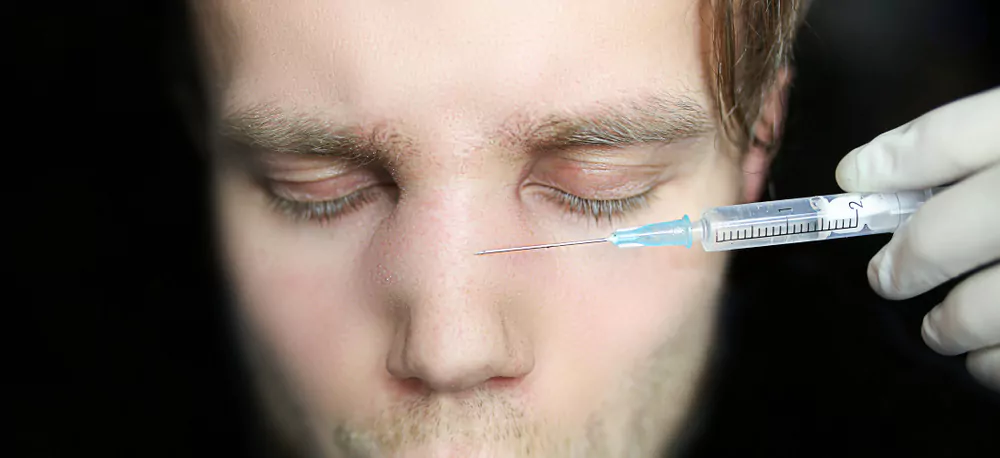Mastering the Art of Reshaping: How to Fix an Upturned Nose

An upturned nose, also known as a “piggy nose” or “turned-up nose,” can be a source of self-consciousness for many people. There are several factors that contribute to the upturned appearance of a nose, including genetic heritage, bone structure, and even gene mutations. In some cases, birth defects or prior rhinoplasty surgery may also result in an upturned nose. This comprehensive guide will explore the causes of upturned noses, the available surgical and nonsurgical treatments, and the potential outcomes and recovery times associated with each procedure.
1 Causes of an Upturned Nose
There are many factors that contribute to the shape of a person’s nose, including their genetic heritage and bone structure. Some of the most common causes of an upturned nose include:
- Genetic heritage: An upturned nose can be a natural trait passed down through generations due to gene mutations or simply as a result of one’s genetic makeup.
- Prior rhinoplasty surgery: If a previous surgery was performed incorrectly, it could result in an over-rotated nose, giving it an upturned appearance.
- Birth defects: Some people are born with upturned noses due to congenital abnormalities or other facial features that affect the nasal structure.
- Nasal foreshortening: This can occur as a result of ageing, leading to nostrils becoming more prominent and the tip of the nose angling upward.
2 Understanding the Upturned Nose Rhinoplasty Procedure

A rhinoplasty, or “nose job,” is a surgical procedure that aims to correct and reshape the nose to achieve a more balanced and harmonious appearance with other facial features. Rhinoplasty surgery procedures can address various issues, such as wide noses, short noses, or upturned noses. The specific techniques and approaches used during a rhinoplasty procedure will depend on the patient’s unique needs and the rhinoplasty surgeon’s expertise.
For individuals with an upturned nose, the primary goal of the rhinoplasty surgery procedure is to counter-rotate the tip of the nose, giving it a more natural and less so angled upward appearance. This can be achieved using several cartilage grafting techniques, which involve harvesting cartilage from the patient’s existing nasal septum or other sources to create a stable support structure for the new position of the nasal tip. Some of the most difficult manoeuvres in a rhinoplasty surgery procedure involve working with the nasal skin and proper internal nasal structure to ensure an optimal outcome.
One of the most common techniques used to correct an upturned nose is the extension graft, which involves placing a cartilage graft at the front edge of the nasal septum to provide adequate support and counter-rotate the nasal tip. This extension graft not only helps to create a more counter-rotated appearance but also provides a stable support structure for the tip, allowing for better long-term results.
Another approach to fixing an upturned nose is by adjusting the existing nasal septum providing support to the nasal tip. By repositioning the nasal septum and altering the nasal tip’s angle, the surgeon can achieve a more counter-rotated position and a more aesthetically pleasing nose and tip shape.
3 Revision Rhinoplasty for Upturned Noses
In some cases, a patient may require revision rhinoplasty if they are unhappy with the results of a previous surgery or if the initial rhinoplasty surgery procedure led to complications such as an over-rotated nose. Revision rhinoplasty can be more complex than a primary rhinoplasty, as the surgeon must work with the post-operative tissue swelling, scar tissue, and potentially altered nose anatomy from the previous surgery.
During revision rhinoplasty, the surgeon may utilize several cartilage grafting techniques to address the upturned appearance and create a more counter-rotated position for the nasal tip. The choice of technique will depend on the patient’s specific needs and the surgeon’s expertise in performing revision rhinoplasty procedures. It is crucial to choose a skilled and experienced rhinoplasty surgeon who specializes in revision surgeries to ensure the best possible outcome from revision surgery.
4 Nonsurgical Rhinoplasty for Upturned Noses

For those who prefer a less invasive approach or are not suitable candidates for surgery, a nonsurgical rhinoplasty, also known as a “nonsurgical nose job,” may be an option. This procedure involves the use of injectable fillers, such as hyaluronic acid, to modify or correct the nose’s shape temporarily. These fillers have a gel-like consistency and can be injected beneath the skin’s surface to add volume or reshape specific areas of the nose.
While non-surgical rhinoplasty may not provide the same level of correction as a surgical procedure, it can still help to create a more balanced appearance and draw attention away from an upturned nose. By injecting filler into the skin in appropriate areas, a skilled practitioner can create a more counter-rotated appearance for the nasal tip, making the nostrils less prominent and achieving a slightly upturned look that appears more natural.
It is essential to note that the results of a nonsurgical rhinoplasty are temporary, typically lasting between 6 to 18 months, depending on the type of filler used. Additionally, this procedure may not be suitable for all patients, particularly those with severe upturned noses or significant structural issues that require surgical intervention.
5 Recovery Time and Post-Operative Care
The recovery time for a surgical rhinoplasty procedure varies between patients and is influenced by factors such as the complexity of the surgery and the individual’s natural healing process. Generally, most patients can expect to experience some post-operative tissue swelling, bruising, and discomfort for several weeks following the procedure.
To minimize these symptoms and promote a smooth recovery, it is essential to follow your surgeon’s post-operative care instructions closely. This may include using cold compresses to reduce swelling, keeping the head elevated, avoiding strenuous activities, and attending follow-up appointments to monitor your progress.
In contrast to plastic surgery, the recovery time for a nonsurgical rhinoplasty is significantly shorter, with most patients experiencing minimal discomfort and being able to return to their regular activities within a day or two. However, it is still essential to follow any care instructions provided by your practitioner and avoid putting pressure on the nose or engaging in activities that may cause the filler to shift.
6 Wrapping Up
Whether you choose a surgical or nonsurgical approach to address an upturned nose shape, it is vital to consult with a qualified and experienced rhinoplasty surgeon or practitioner to discuss your concerns and determine the best timing and treatment options for your specific needs. With the appropriate procedure and expert care, it is possible to achieve a more balanced and harmonious appearance that allows you to feel confident and comfortable with your nose and facial features.
Community Q&A
About This Article
This article has been viewed 501 times.



